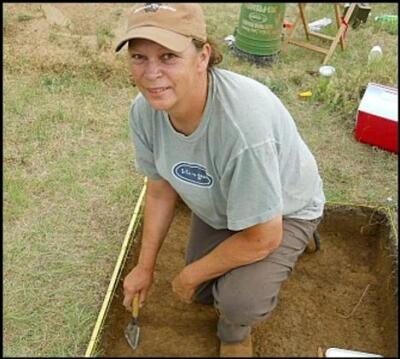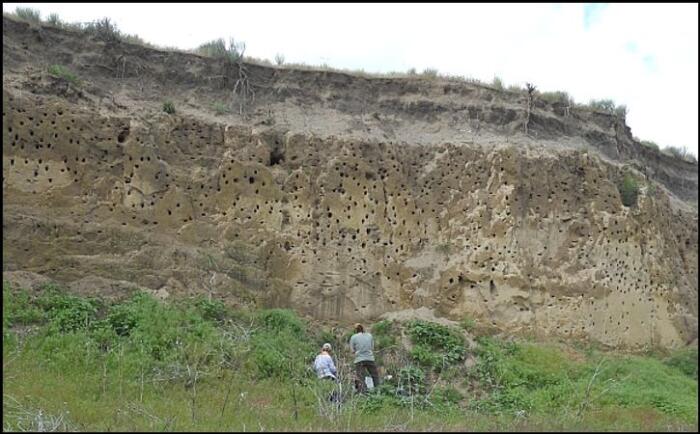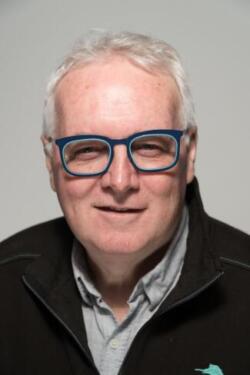1914 Indigenous archaeological perspective
The Indigenous Paleolithic of the Western Hemisphere
by Paulette F.C. Steeves
Lincoln: University of Nebraska Press, 2021
$30 (USD) / 9781496234704
Reviewed by Robert (Bob) Muckle
*
 One of the most popular topics in archaeology of the americas is that often phrased as “the peopling of the americas,” which includes interest in the timing and routes taken by the initial human occupants of North and South America.
One of the most popular topics in archaeology of the americas is that often phrased as “the peopling of the americas,” which includes interest in the timing and routes taken by the initial human occupants of North and South America.
What makes The Indigenous Peoples of the Western Hemisphere different from others addressing the topic is that the author, Paulette Steeves, is an Indigenous archaeologist who brings a very critical perspective to American archaeology, challenges conventional and conservative thinking by archaeologists, and merges Indigenous ways of knowing and sharing with mainstream archaeology in understanding the peopling of the americas.
Mostly, in opposition to conventional archaeological thinking that people first arrived in the americas during the terminal stages of the last ice age, about 15,000 – 12,000 years ago, Steeves argues that the peopling of the americas began at least 30,000 years ago and it may have been over 100,000 years ago.

The book, a bit less than 300 pages, includes 15 black and white illustrations, several chapters, an appendix of relevant archaeological sites, a bibliography, and an index. The book is based on Steeve’s Ph.D dissertation research, but written in a style that is suitable to both academic and non-academic readerships. In the Introduction she states “Although I carried out this research on Pleistocene archaeological sites with a focus on relinking Indigenous peoples to their homelands in deep time, this book is for everyone.” Steeves is currently a professor at Algoma University in Ontario.
The introduction sets the stage for the book, beginning with Steeve’s situating herself as an Indigenous person with Cree, Metis, and European ancestry, including that she grew up along the Fraser River in Lillooet. She also frames the book as challenging “the dogmatic Eurocentric discussions of the history of the first people of the Western Hemisphere” including “a well-documented history of racism in American archaeology that has constrained and dehumanized the Indigenous past.” She makes her perspective clear with the statement “The historically embedded boundary of recent (on a global human history scale) time frames for the first migrations to the western hemisphere is not simply based on the archaeological record; instead it is a political construct maintaining colonial power and control over Indigenous heritage, material remains, and history.”
Following the introduction there are eight chapters. Chapter 1 focuses on Indigenous method and theory, and Chapter 2 on a critical history of American archaeology. Ancient landscapes in the americas and ancient archaeological sites in the eastern hemisphere are the topics of Chapters 3 and 4 respectively. Ancient sites in North America are the focus of Chapter 5 and ancient sites in South America are the focus of Chapter 6. Chapter 7 focuses on supporting evidence of very early peopling of the americas coming from linguistics, oral traditions, and genetics, and Chapter 8 discusses the importance of the Indigenous perspective and summarizes her work with the conclusion that people have been in the americas much longer than most archaeologists accept.

This is an interesting book, which is likely to be deemed significant and welcomed by many, both within and outside of archaeological and Indigenous communities. Much of the criticism Steeves levels against archaeologists are valid; North American archaeology has been very much part of the colonial enterprise. In many ways, governments have and continue to control the study of the human past, including determining who and under what circumstances archaeological research is undertaken and shared.
The book emphasizes a purported attempt to maintain an archaeological view that people have only been the americas for 12,000 years (although in a few places Steeves acknowledges that recent research is placing it closer to 15,000 years), and that archaeologists have an interest and desire to keep this view.
It isn’t made clear in the book, but this is an extreme view among archaeologists. It is likely that only a very small minority of archaeologists continue to hold on to the initial peopling of the western hemisphere as occurring 12,000 years ago. Its very likely that the majority of archaeologists doing or following the research on the topic over the past few decades accept the initial entries as occurring in the 20,000 – 14,000 year range. And rather than trying to maintain the relatively late arrival around 12,000 years ago, I think all archaeologists would be extremely excited to have reliable evidence extending into the even more distant past.
There are many well-established archaeological sites that place people in the americas by about 12,000 years ago. Over the past few years, the numbers of probable older sites have been increasing significantly, including sites along the coast of BC dating to 13,000 and 14,000 years ago). Since most of these have been discovered and reported since Steeves did her research, it is understandable they are missing from the book. Significantly, almost all archaeologists interested in the topic agree that the primary (and perhaps only) route to the americas during the last ice age was along the coast of British Columbia.
For most archaeologists to unequivocally accept the dates of archaeological sites, they must meet multiple criteria: the evidence must clearly by human (eg. not rocks or bones that look like artifacts but may have been altered by natural processes); the dates must reliable (eg. preferably a sequence of radiocarbon dates in association with the finds; and sites must demonstrate considerable integrity (eg. not disturbed).
Rather than a deliberate attempt to maintain the view that people have been in the americas for a relatively recent time (on a global scale), its more likely, in my opinion, that the failure to accept the many archaeological sites Steeves mentions that purportedly date to 15,000 and more years ago is that these sites fail to meet these criteria. whether people initially came 12,000 or 15,000 years ago is a small issue. A much bigger one is whether the many archaeological sites Steeves provides as evidence of an earlier, pre-15,000-year occupation are acceptable. It’s likely that most archaeologists will continue to say no, while many others will be more accepting of the evidence put forth by Steeves, even though they don’t meet the high standards put forth by archaeologists. This is essentially the debate – are the criteria too stringent? Does archaeological research trump Indigenous ways of knowing?
Archaeology in North America is currently experiencing a movement towards integrating Indigenous way of knowing into mainstream archaeological research, and Steeves demonstrates one way of doing that. Not all archaeologists are on board, but many are, including in British Columbia, where there are many collaborative projects between First Nations and both academic and commercial archaeologists occurring. There have been books written by Indigenous archaeologists before, but this one is breaking new ground. It’s a significant contribution to archaeology, Indigenous studies, and understanding the human past in the americas.

*

Bob Muckle has been practicing, teaching, and writing about archaeology for more than 30 years. His work life is based at Capilano University in North Vancouver, and books he has authored or co-authored include Forgotten Things: The Story of the Seymour Valley Archaeology Project; Introducing Archaeology; Through the Lens of Anthropology: an Introduction to Human Evolution and Culture; The First Nations of British Columbia; and Indigenous Peoples of North America.
*
The British Columbia Review
Interim Editors, 2023-24: Trevor Marc Hughes (non-fiction), Brett Josef Grubisic (fiction)
Publisher: Richard Mackie
Formerly The Ormsby Review, The British Columbia Review is an on-line book review and journal service for BC writers and readers. The Advisory Board now consists of Jean Barman, Wade Davis, Robin Fisher, Barry Gough, Hugh Johnston, Kathy Mezei, Patricia Roy, Maria Tippett, and Graeme Wynn. Provincial Government Patron (since September 2018): Creative BC. Honorary Patron: Yosef Wosk. Scholarly Patron: SFU Graduate Liberal Studies. The British Columbia Review was founded in 2016 by Richard Mackie and Alan Twigg.
“Only connect.” – E.M. Forster